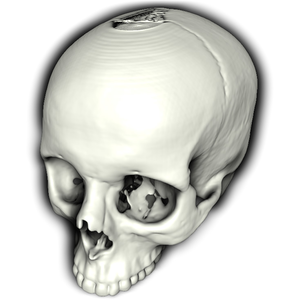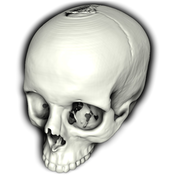Information
- Replaced by: bruckner-2007-EDF
- Publication Type: Technical Report
- Workgroup(s)/Project(s):
- Date: April 2007
- Number: TR-186-2-07-04
- Keywords: illustrative visualization, halos, volume rendering
Abstract
Volumetric data commonly has high depth complexity which makes it difficult to judge spatial relationships accurately. There are many different ways to enhance depth perception, such as shading, contours, and shadows. Artists and illustrators frequently employ halos for this purpose. In this technique, regions surrounding the edges of certain structures are darkened or brightened which makes it easier to judge occlusion. Based on this concept, we present a flexible method for enhancing and highlighting structures of interest using GPU-based direct volume rendering. Our approach uses an interactively defined halo transfer function to classify structures of interest based on data value, direction, and position. A feature-preserving spreading algorithm is applied to distribute seed values to neighboring locations, generating a controllably smooth field of halo intensities. These halo intensities are then mapped to colors and opacities using a halo profile function. Our method can be used to annotate features at interactive frame rates.Additional Files and Images
Weblinks
No further information available.BibTeX
@techreport{TR-186-2-07-04,
title = "Enhancing Depth-Perception with Flexible Volumetric Halos",
author = "Stefan Bruckner and Eduard Gr\"{o}ller",
year = "2007",
abstract = "Volumetric data commonly has high depth complexity which
makes it difficult to judge spatial relationships
accurately. There are many different ways to enhance depth
perception, such as shading, contours, and shadows. Artists
and illustrators frequently employ halos for this purpose.
In this technique, regions surrounding the edges of certain
structures are darkened or brightened which makes it easier
to judge occlusion. Based on this concept, we present a
flexible method for enhancing and highlighting structures of
interest using GPU-based direct volume rendering. Our
approach uses an interactively defined halo transfer
function to classify structures of interest based on data
value, direction, and position. A feature-preserving
spreading algorithm is applied to distribute seed values to
neighboring locations, generating a controllably smooth
field of halo intensities. These halo intensities are then
mapped to colors and opacities using a halo profile
function. Our method can be used to annotate features at
interactive frame rates.",
month = apr,
number = "TR-186-2-07-04",
address = "Favoritenstrasse 9-11/E193-02, A-1040 Vienna, Austria",
institution = "Institute of Computer Graphics and Algorithms, Vienna
University of Technology ",
note = "human contact: technical-report@cg.tuwien.ac.at",
keywords = "illustrative visualization, halos, volume rendering",
URL = "https://www.cg.tuwien.ac.at/research/publications/2007/TR-186-2-07-04/",
}


 Technical Report
Technical Report
